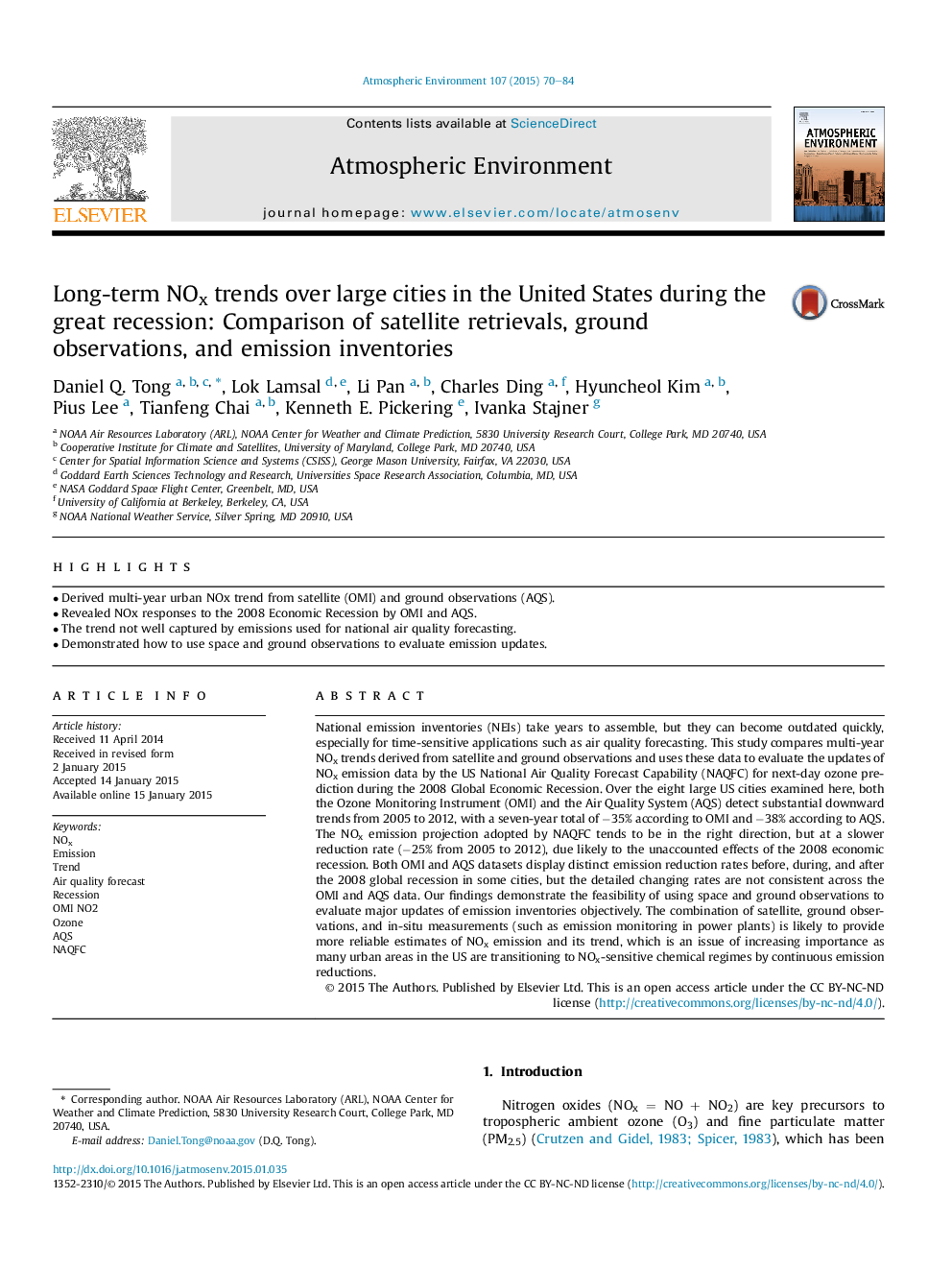| Article ID | Journal | Published Year | Pages | File Type |
|---|---|---|---|---|
| 6338393 | Atmospheric Environment | 2015 | 15 Pages |
Abstract
National emission inventories (NEIs) take years to assemble, but they can become outdated quickly, especially for time-sensitive applications such as air quality forecasting. This study compares multi-year NOx trends derived from satellite and ground observations and uses these data to evaluate the updates of NOx emission data by the US National Air Quality Forecast Capability (NAQFC) for next-day ozone prediction during the 2008 Global Economic Recession. Over the eight large US cities examined here, both the Ozone Monitoring Instrument (OMI) and the Air Quality System (AQS) detect substantial downward trends from 2005 to 2012, with a seven-year total of â35% according to OMI and â38% according to AQS. The NOx emission projection adopted by NAQFC tends to be in the right direction, but at a slower reduction rate (â25% from 2005 to 2012), due likely to the unaccounted effects of the 2008 economic recession. Both OMI and AQS datasets display distinct emission reduction rates before, during, and after the 2008 global recession in some cities, but the detailed changing rates are not consistent across the OMI and AQS data. Our findings demonstrate the feasibility of using space and ground observations to evaluate major updates of emission inventories objectively. The combination of satellite, ground observations, and in-situ measurements (such as emission monitoring in power plants) is likely to provide more reliable estimates of NOx emission and its trend, which is an issue of increasing importance as many urban areas in the US are transitioning to NOx-sensitive chemical regimes by continuous emission reductions.
Related Topics
Physical Sciences and Engineering
Earth and Planetary Sciences
Atmospheric Science
Authors
Daniel Q. Tong, Lok Lamsal, Li Pan, Charles Ding, Hyuncheol Kim, Pius Lee, Tianfeng Chai, Kenneth E. Pickering, Ivanka Stajner,
